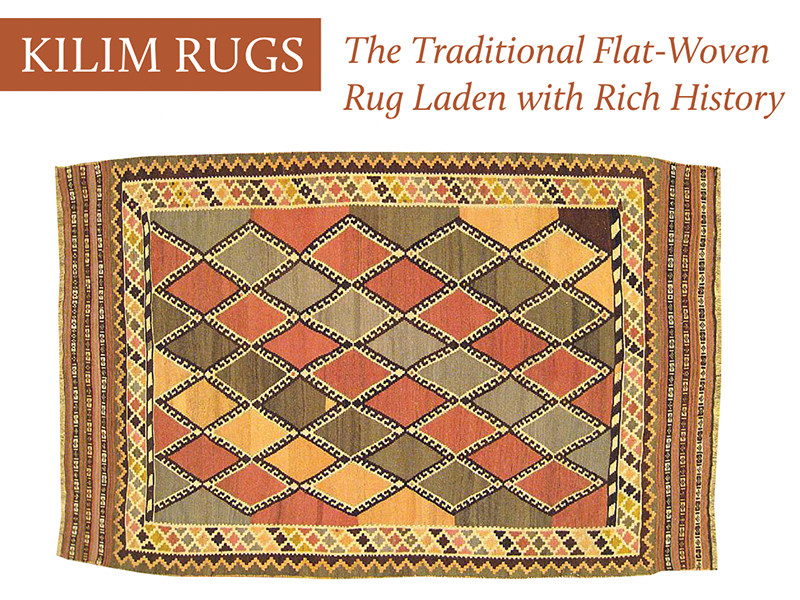In past issues of Rug Insider Magazine, we have examined numerous antique rug styles, including Sarouk, Tabriz, Kerman, Kashan, Heriz, Bidjar, among others. One thing that all of these rug styles have had in common is that they are all pile rugs, with wool pile that sticks out above the foundational warp and weft of the carpet. In contrast, one of the most beloved traditional rug styles of the Middle East is the Kilim rug, a flat-woven rug style with no pile, but hand- made with the rich history of the various locations from which it emanates.
FLAT-WOVEN KILIM RUGS AND THEIR TRIBAL NOMADIC WEAVERS
The Kilim rug, relative to the aforementioned pile rugs from such renowned weaving regions as Sarouk, Tabriz, and Kashan, is a humble rug, with no upright wool pile, and with the rug’s decorative aesthetic being woven within the foundational warp and weft of the piece.
These flat-woven Kilim rugs were mostly woven by nomadic tribal groups, who would hand-weave them on simple portable looms, which would travel with them on their nomadic journeys.
Given that these simple, pileless weavings would be made by nomadic tribes, they were mostly made as durable weavings for utilitarian purposes, including use as floor coverings, blankets, tent coverings, doorway separators, and as dowries for children.
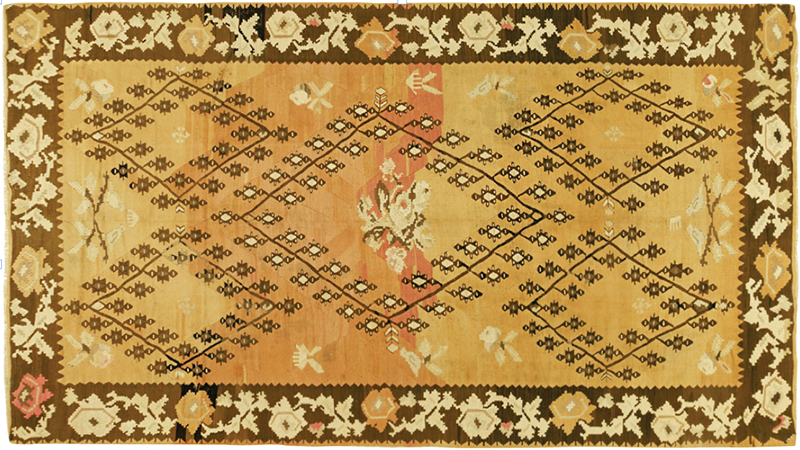
Antique Turkish Kilim, 12’5” x 7’4”, circa 1930, #28774
These flat-woven rugs would typically be made with rudimentary geometric designs, reflecting both the aesthetic of the nomadic tribespeople weaving them, and the limitations of their weaving with their simple techniques and nomadic lifestyle, where looms would have to be taken apart and re-assembled regularly, not allowing for a rug to sit unfinished for long.
The designs of these flat-woven Kilim rugs would vary from region to region, with the nomadic tribes of different locations having their own aesthetic qualities and unique characteristics. The three regions from which traditional Kilim rugs are most often found are Turkey, Bessarabia, and Persia, each of which have their own styles and sensibilities.
TURKISH KILIMS
Perhaps the most commonly seen type of traditional flat-woven Kilim rug is from the nomadic tribes of Turkey. The Turkish Kilim is the prototypical vintage Kilim, with basic rudimentary geometric designs, and with familiar design motifs.
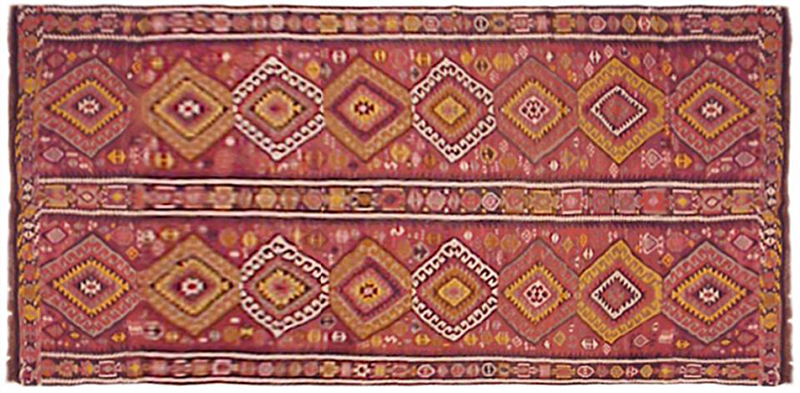
Antique Turkish Kilim, 12’1” x 4’8”, circa 1930, #28062
The design motifs of these Turkish Kilim rugs often took the form of simple diamond shapes, or in other cases, stylized floral elements rendered in a rudimentary way. As mentioned above, these flat-woven Kilim rugs were woven mostly for utilitarian purposes, like tent or floor coverings, connections between neighboring tents, tent bands, and more.
Another common usage of these Turkish Kilim rugs was to be kneeled upon for prayer, as in the prayer design Turkish Kilim rug pictured below, with multiple “mihrab” or prayer cornices, to be used for prayer simultaneously by several members of the family or tribe.
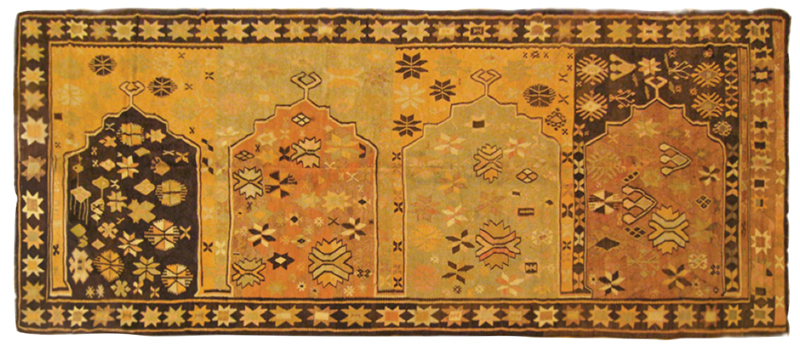
Antique Turkish Kilim Prayer Rug, 11’2” x 4’7”, circa 1930, #27207
Turkish Kilim rugs were plentiful and widespread among tribes around the country, leading to a range of colors, styles, and aesthetic characteristics, but all retaining the common elements of simple geometric designs, and familiar shapes and colors.
BESSARABIAN KILIMS
Perhaps even simpler and more unified in its design were the traditional Kilim rugs from the nomadic tribes of the historic region of Bessarabia. Bessarabia was a regional area traversing portions of Central Asia, Eastern Europe, and Southern Russia.
The style of the Bessarabian flat-woven Kilim rugs would be similar to the Turkish Kilim rug, but with designs that would lean more toward the emulation of simple floral elements as opposed to the the larger geometric shapes favored in Turkey.
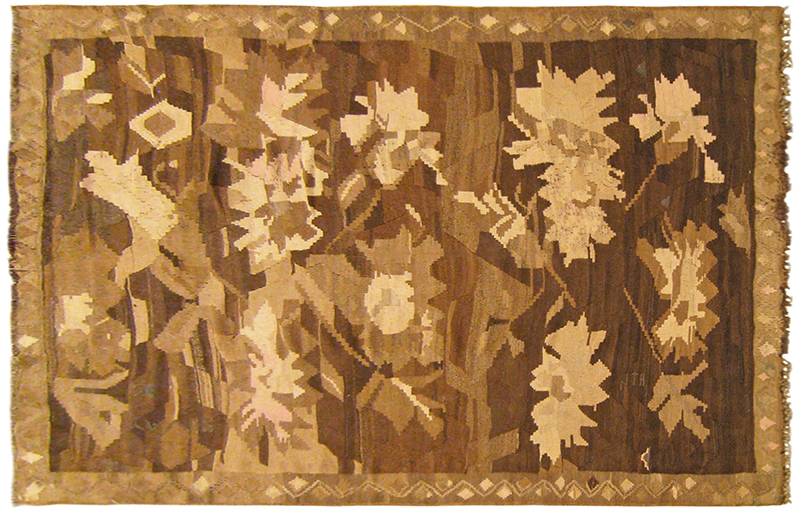
Antique Bessarabian Kilim, 9’4” x 6’3”, circa 1930, #32073
The orientation among Bessarabian Kilim rugs toward conveying more floral elements, even in a simple, stylized way, would sometimes be expressed with less design, and with a single medallion on an otherwise spare central field, and in other cases with many stylized floral motifs rendered in a smaller scale, and covering more of the field space within the rug.
The aesthetic of Kilim rugs having more design rendered in a smaller scale, and repeating across the entire field of the rug would reach greater heights, however, in the Kilim rugs emanating from Persia.
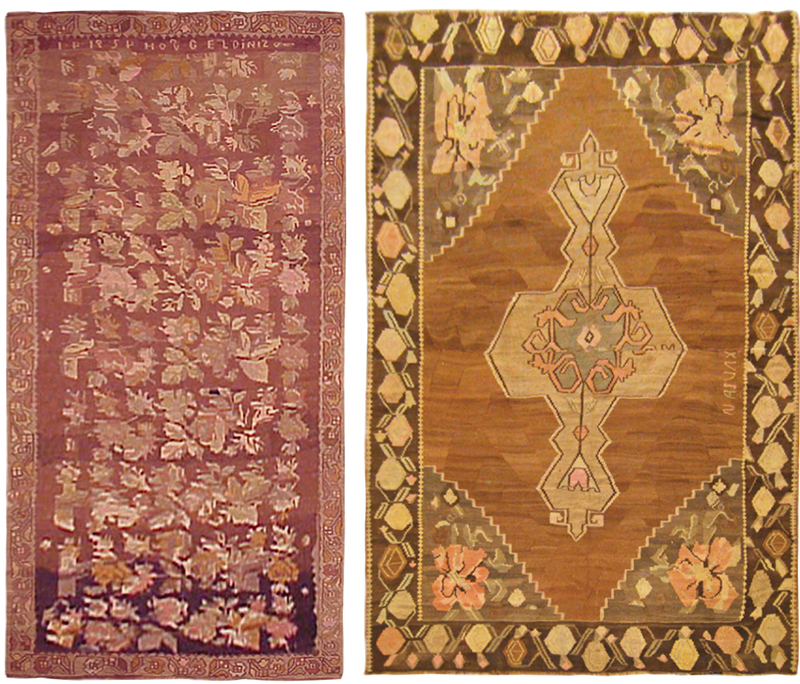
Antique Bessarabian Kilims #27246 (left), 12’0” x 5’0”, circa 1930; and #32119, 10’4” x 7’2”, circa 1930
PERSIAN KILIMS
Persian flat-woven Kilim rugs are often the “busiest” of the Kilim rug styles, with the most design, and with the smallest scale of repetition of design motifs.
Perhaps the proximity of the nomadic tribes of Persia to the larger weaving centers throughout the land would allow for more interaction with more expert weavers. Perhaps it was just a regional thing. Either way, the level of design and clarity can be astounding for this weaving style.
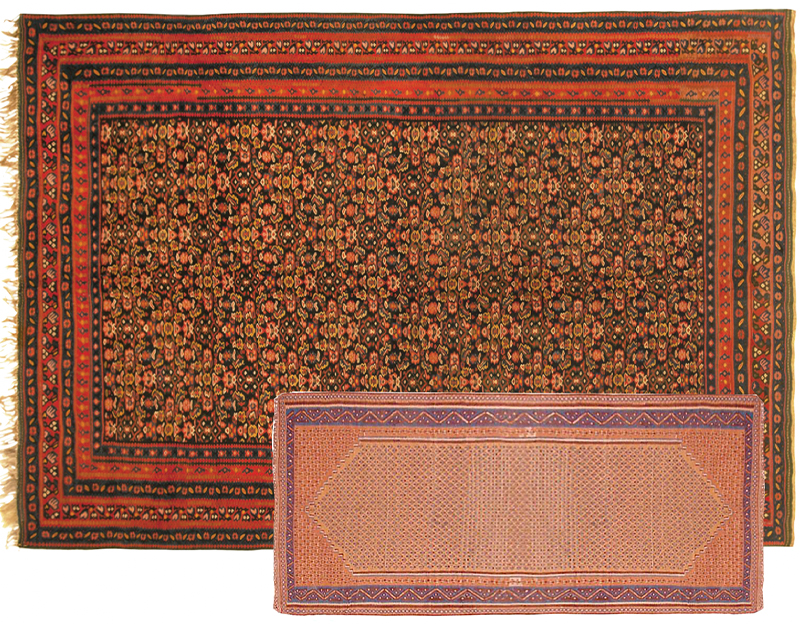
Seneh Kilim, #32151, 9’3” x 6’2”, circa 1930 and inset Antique Kilim #28374, 13’8” x 5’6”, circa 1930
Among the Persian Kilim rug weavings, one of the ones that displays the greatest level of weaving wizardry and complexity is the Seneh Kilim, which exhibits a level of design complexity and articulation that is one of the most expressive and impressive of any Kilim style.
All of the antique flat-woven Kilims discussed in this article are still popular in the United States, Europe, and beyond. The world’s largest selection of these rugs can be found at Persian Gallery New York.
